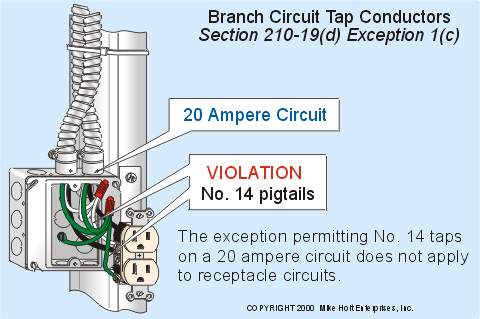zinsco
Member
- Location
- San Diego, CA
I understand according to 210.19 pig-tailing out to #14 on 20 amp circuits is not allowed, and the hole tap argument from table 210.24 doesn't work because a tap still has to have overcurrent protection somewhere and a pigtail doesn't.
But...........I don't like it. It doesn't seem right to me. If you can use 15 amp outlets on a 20 amp multioutlet circuit than you should be allowed to pigtail with 15 amp wire. If the wire can't handle the load, neither can the outlet.
If there is such concern that the wire will overheat than there should be equal concern for the outlets and they should be required to be 20 amp as well.
I know that almost all of you will probably disagree with me, and that I am setting myself up to get smashed by you all but there it is and there you have it.
I truly am interested to here all your thoughts on this, but I think it will take an awful lot to convince me that I am wrong.
Thanks
But...........I don't like it. It doesn't seem right to me. If you can use 15 amp outlets on a 20 amp multioutlet circuit than you should be allowed to pigtail with 15 amp wire. If the wire can't handle the load, neither can the outlet.
If there is such concern that the wire will overheat than there should be equal concern for the outlets and they should be required to be 20 amp as well.
I know that almost all of you will probably disagree with me, and that I am setting myself up to get smashed by you all but there it is and there you have it.
I truly am interested to here all your thoughts on this, but I think it will take an awful lot to convince me that I am wrong.
Thanks

